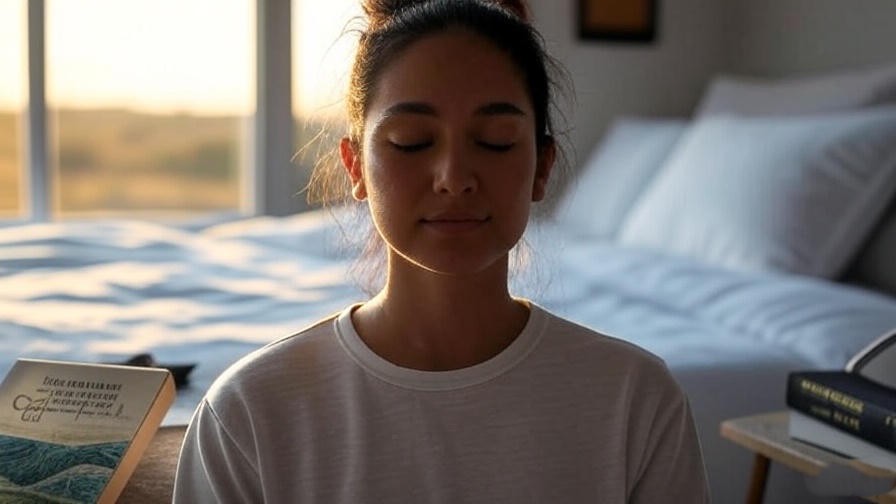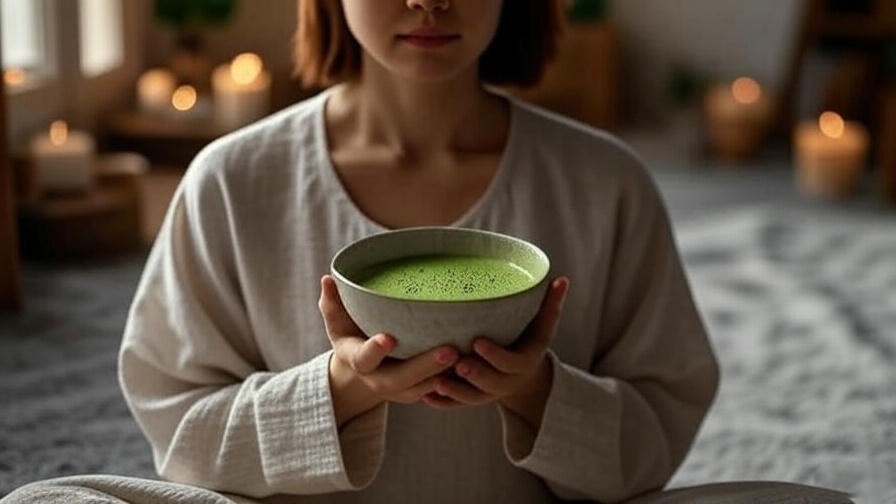Tossing and turning at night, your mind racing with endless thoughts—sound familiar? In today’s fast-paced world, finding true calm and restful sleep feels like an elusive dream for many. Enter the powerful combination of weed and meditation, a holistic approach gaining traction for its ability to soothe the mind, ease stress, and unlock deeper inner peace. Whether you’re battling insomnia, chronic stress, or simply seeking a natural path to well-being, this synergy offers a promising solution. Backed by science and expert insights, this article dives into how cannabis and meditation work together to transform your sleep and mental clarity, providing practical steps to integrate them into your life safely and effectively.
Understanding the Connection Between Weed, Meditation, and Well-Being

The Science of Cannabis and Its Effects on the Mind
Cannabis interacts with the body’s endocannabinoid system, a network of receptors that regulates mood, stress, and sleep. Key compounds like THC (tetrahydrocannabinol) and CBD (cannabidiol) play distinct roles. THC, the psychoactive component, promotes relaxation and euphoria, while CBD calms the nervous system without the “high.” According to a 2019 study in the Journal of Clinical Medicine, CBD can reduce anxiety and improve sleep quality by modulating cortisol levels. This makes cannabis a natural ally for those seeking mental calm, setting the stage for deeper meditative experiences.
Meditation as a Tool for Inner Peace
Meditation, a centuries-old practice, rewires the brain for calm and clarity. Techniques like mindfulness and body scan meditation reduce stress by lowering activity in the amygdala, the brain’s fear center, as shown in a 2018 study published in Frontiers in Human Neuroscience. Regular meditation enhances focus, emotional resilience, and sleep quality by promoting alpha brain waves associated with relaxation. Dr. Sara Lazar, a neuroscientist at Harvard Medical School, notes, “Meditation fosters structural changes in the brain, enhancing areas tied to self-awareness and stress regulation.” When paired with cannabis, these benefits can amplify.
Why Weed and Meditation Work Together
The synergy of weed and meditation lies in their complementary effects. Cannabis heightens sensory awareness and relaxes the body, making it easier to enter a meditative state. Meditation, in turn, channels this heightened awareness into mindfulness, helping you stay present. For example, a 2021 case study in Cannabis and Cannabinoid Research highlighted how participants using cannabis during guided meditation reported deeper relaxation and improved focus. This combination can quiet the mind’s chatter, paving the way for restful sleep and profound inner peace.
Benefits of Combining Weed and Meditation for Sleep and Inner Peace
Improved Sleep Quality
Struggling to fall asleep or stay asleep? Cannabis can help. Research in the Journal of Clinical Sleep Medicine (2020) found that CBD reduces sleep latency—the time it takes to fall asleep—while THC may enhance deep REM sleep cycles. Meditation complements this by calming racing thoughts. A 2015 meta-analysis in JAMA Internal Medicine showed mindfulness meditation significantly improved sleep quality in insomnia patients. Together, they create a powerful ritual for restful nights, addressing both physical and mental barriers to sleep.
Reduced Stress and Anxiety
Chronic stress and anxiety disrupt sleep and well-being. Cannabis, particularly CBD-rich strains, lowers anxiety by interacting with serotonin receptors, as noted in a 2019 Neurotherapeutics study. Meditation further reduces cortisol, the stress hormone, fostering emotional balance. Mindfulness coach Dr. Emily Chen explains, “Pairing cannabis with breathwork can ground you in the moment, dissolving stress.” This dual approach helps you unwind, making it easier to meditate deeply and sleep soundly.
Enhanced Mindfulness and Self-Awareness
Cannabis can heighten sensory perception, making colors, sounds, and sensations more vivid—ideal for immersive meditation. This heightened state allows you to focus on the present, deepening mindfulness. Meditation, meanwhile, helps process emotions and fosters self-reflection. A user shared, “Using cannabis before a body scan meditation helped me connect with my emotions in a way I never had before.” This synergy cultivates self-awareness, a cornerstone of holistic well-being.
Holistic Well-Being and Happiness
Better sleep and reduced stress naturally boost happiness. By addressing physical and mental tension, weed and meditation create a foundation for long-term wellness. A 2022 survey by the American Psychological Association linked mindfulness practices to higher life satisfaction, while cannabis users often report improved mood. Together, they align with holistic wellness trends, offering a natural path to balance and joy.
How to Safely Combine Weed and Meditation

Choosing the Right Cannabis Strain
Not all cannabis is created equal. Indica strains, like Granddaddy Purple or Northern Lights, are ideal for relaxation and sleep due to their sedative effects. Sativa strains, such as Blue Dream, offer uplifting clarity for daytime meditation. “Start with a strain high in CBD for calm without intense psychoactivity,” advises Jane Torres, a cannabis consultant with 10 years of experience. Always source from reputable dispensaries to ensure quality and safety.
Finding the Right Meditation Practice
Beginners should start with simple techniques like body scan or guided meditation, which pair well with cannabis’s calming effects. A body scan involves focusing on each body part, releasing tension—a process enhanced by cannabis’s sensory amplification. Apps like Calm or Insight Timer offer guided sessions tailored for relaxation. Try a 10-minute session to start, gradually increasing as you gain confidence.
Dosage and Timing for Optimal Results
Less is more when combining cannabis and meditation. Start with a low dose—1-2.5 mg of THC or 5-10 mg of CBD—to avoid overstimulation. Consume 20-30 minutes before meditating to allow effects to settle. Evening sessions are ideal for sleep-focused meditation. Always consult a healthcare professional, especially if you’re new to cannabis or on medications.
Creating the Perfect Environment
Set the stage for success with a calming environment. Dim the lights, use soft cushions, and play soothing music or nature sounds. Aromatherapy, like lavender essential oil, can enhance relaxation. For example, set up a cozy corner with candles, a blanket, and a meditation app playing a 15-minute guided session. This sensory-rich space deepens the weed-and-meditation experience.
Potential Risks and Considerations

Understanding Individual Responses to Cannabis
Cannabis affects everyone differently, influenced by factors like tolerance, body chemistry, and mental health. While many experience relaxation, some may feel anxiety or discomfort, especially with high-THC strains. A 2020 study in Drug and Alcohol Dependence noted that overconsumption can lead to paranoia in sensitive individuals. To mitigate this, start with low doses and monitor your body’s response. Dr. Michael Verbora, a cannabis clinician, advises, “Listen to your body and adjust dosage gradually to find your sweet spot for meditation.”
Legal and Ethical Considerations
Cannabis legality varies widely. In the U.S., it’s legal for recreational use in states like California and Colorado but remains illegal in others. Always check local laws to ensure compliance. Ethically, use cannabis mindfully—avoid dependency and respect its potency. Sourcing from licensed dispensaries ensures quality and supports regulated markets. For those in regions where cannabis is illegal, consider CBD-only products, which are widely legal and offer similar calming benefits.
When to Avoid Combining Weed and Meditation
This practice isn’t for everyone. Individuals with conditions like schizophrenia or severe anxiety may experience worsened symptoms, as noted in a 2021 Psychiatry Research study. Those on medications like antidepressants should consult a doctor due to potential interactions. Pregnant or breastfeeding individuals should avoid cannabis entirely. Meditation, while generally safe, can sometimes surface intense emotions, so proceed with caution if you’re new to either practice.
Practical Tips for Integrating Weed and Meditation into Your Routine
Building a Consistent Practice
Consistency is key to reaping the benefits of weed and meditation. Start with a simple routine: a 10-15 minute meditation session three evenings a week, paired with a low-dose cannabis product. For example, try meditating after using a CBD tincture or a small dose of an indica strain before bed. Over time, increase frequency or duration as you become comfortable. A sample schedule might include:
- Monday, Wednesday, Friday: 7 PM, consume 5 mg CBD, followed by a 15-minute guided meditation.
- Sunday: Longer 20-minute body scan meditation with a low-THC edible for deeper relaxation.
Tracking Your Progress
Journaling helps you measure improvements in sleep, stress, and mindfulness. Record metrics like sleep duration, mood, and meditation session length. Apps like Daylio or a simple notebook work well. For example, note how a specific strain affects your meditation focus or how many hours you sleep after a session. Over weeks, you’ll identify patterns and optimize your practice. Dr. Rachel Knox, a cannabis wellness expert, suggests, “Tracking helps you fine-tune dosage and meditation style for maximum benefit.”
Combining with Other Holistic Practices
Weed and meditation pair beautifully with other wellness practices. Try yoga before meditating to loosen the body, enhancing cannabis’s relaxing effects. Breathwork, like the 4-7-8 technique, can deepen relaxation when combined with a calming strain. Gratitude journaling post-meditation reinforces positive emotions. Holistic wellness coach Lisa Harper recommends, “Integrate a 5-minute gratitude practice after meditating to amplify feelings of peace and contentment.” These additions create a comprehensive self-care routine.
Common Questions About Weed and Meditation (FAQ Section)
Is it Safe to Combine Weed and Meditation?
When done mindfully, combining weed and meditation is generally safe for healthy adults. Low doses of CBD or THC minimize risks, but overconsumption can lead to discomfort. A 2022 review in Frontiers in Psychiatry found low-dose cannabis safe for most users when paired with mindfulness practices. Always start small and consult a healthcare provider if you have underlying conditions.
Can Beginners Use Weed and Meditation Together?
Yes, beginners can start with CBD-dominant products, which are non-psychoactive and gentle. Try a 5-minute guided meditation after using a CBD oil or vape. Gradually introduce low-THC products as you gain experience. Apps like Headspace offer beginner-friendly sessions that pair well with cannabis’s calming effects.
How Does This Practice Affect Dreams?
Cannabis, particularly THC, can suppress REM sleep, potentially reducing dream vividness, per a 2019 Sleep Medicine study. However, meditation enhances dream recall by improving mindfulness. Balancing low-dose cannabis with meditation may preserve dream quality while promoting restful sleep. Journaling dreams upon waking can further enhance recall.
What if I Don’t Live in a Region Where Cannabis is Legal?
If cannabis is illegal, focus on meditation alone or use CBD products, which are legal in many areas. CBD offers similar relaxation benefits without THC’s psychoactivity. Try mindfulness or yoga nidra meditations for sleep and stress relief, which mimic the calming effects of cannabis.
Expert Insights and Real-World Success Stories

What Experts Say About Weed and Meditation
Experts see this combination as a powerful tool for wellness. Dr. Ethan Russo, a neurologist and cannabis researcher, states, “Cannabis can enhance mindfulness by quieting mental noise, making meditation more accessible.” Sleep researcher Dr. Michael Breus adds, “Mindfulness meditation, paired with CBD, can significantly improve sleep onset and quality.” These insights, backed by studies in Cannabis and Cannabinoid Research, affirm the practice’s efficacy.
Real People, Real Results
Take Sarah, a 34-year-old teacher who struggled with insomnia for years. After incorporating CBD and guided meditation into her nightly routine, she reported, “I fall asleep faster and wake up refreshed. The meditation keeps me grounded, and the CBD takes the edge off my anxiety.” Similarly, Mark, a 28-year-old graphic designer, used an indica strain with body scan meditation to manage stress: “It’s like hitting a reset button for my mind.” These stories highlight the transformative potential of this practice.
Conclusion
Combining weed and meditation offers a natural, holistic path to better sleep and inner peace. By leveraging cannabis’s calming effects and meditation’s mindfulness benefits, you can reduce stress, improve sleep quality, and cultivate lasting well-being. Start with a low dose, choose a beginner-friendly meditation, and create a calming environment to maximize results. Whether you’re new to cannabis or meditation, this synergy can transform your routine. Try a 10-minute session tonight and share your experience in the comments below. For personalized advice, consult a healthcare professional to ensure this practice suits your needs.













